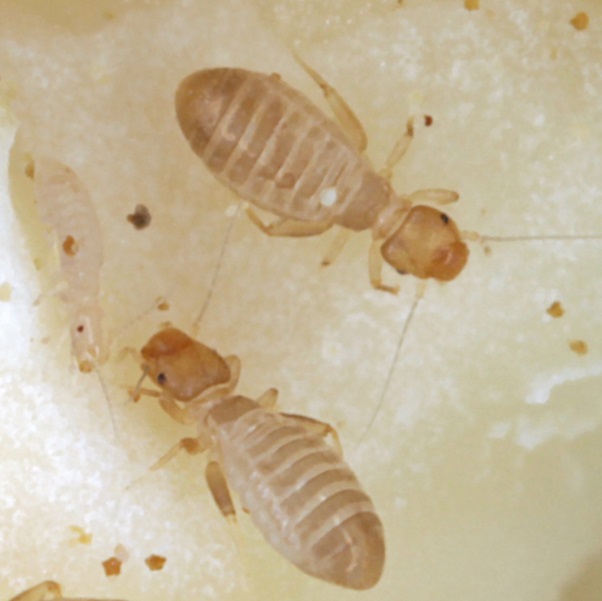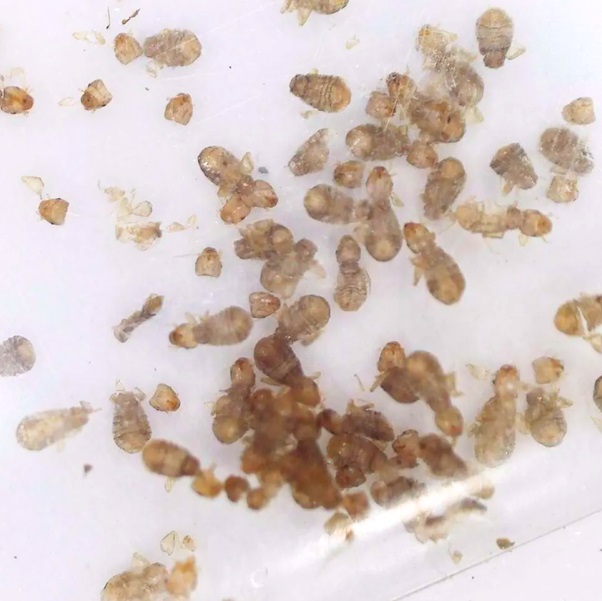Booklice, also known as psocids, are small insects that are commonly found in homes, especially in areas with high humidity and dampness. While booklice do not cause any direct harm to humans or pets, their presence can be a nuisance and indicate underlying moisture issues. In this article, we will delve into the world of booklice in Singapore, exploring their characteristics, the factors that attract them, preventive measures, and effective control strategies to keep your home booklice-free.
Section 1: What is Booklice?
Booklice are tiny, soft-bodied insects that belong to the order Psocoptera. Despite their name, they are not lice and do not feed on books. They are usually pale in colour and have a winged or wingless form. Booklice are commonly found in areas with high humidity, such as kitchens, bathrooms, basements, and storage areas. They are attracted to organic materials, including food particles, mould, fungi, and decaying plant matter. While booklice do not bite or sting, their presence can be a sign of excess moisture and poor hygiene.
Section 2: Identifying Book Lice Infestations
To identify a booklice infestation, look for tiny, winged or wingless insects crawling on surfaces, especially in areas with high humidity. Booklice are usually around 1 to 2 millimetres in length and have a soft body. They move quickly and can be seen in clusters on walls, ceilings, and objects. Unlike other pests, booklice do not leave behind visible trails or droppings. If you suspect a booklice infestation, it is important to confirm their presence and address the underlying moisture issue to prevent their recurrence.
Identifying a booklice infestation is crucial for prompt action. Here are some additional details to help you recognize these tiny insects:
Appearance: Booklice are extremely small, measuring around 1 to 2 millimetres in length. They have soft bodies and are usually pale or translucent in colour. Some booklice may have wings, while others are wingless. Their bodies are elongated and oval-shaped.
Habitat: Booklice are commonly found in areas with high humidity and moisture, such as kitchens, bathrooms, basements, and laundry rooms. They are often seen on walls, ceilings, window sills, and surfaces where moisture is present.
Behaviour: Booklice are attracted to organic materials, including food particles, mould, fungi, and decaying plant matter. They feed on these substances and thrive in environments with excess moisture. Unlike other pests, booklice do not bite, sting, or cause any direct harm to humans or pets.
Section 3: Preventive Measures for Booklice
Preventing booklice in Singapore starts with controlling the moisture levels in your home. Here are some preventive measures you can take:
Maintain proper ventilation: Ensure good airflow and ventilation in areas prone to moisture, such as bathrooms and kitchens. Use exhaust fans or dehumidifiers to reduce humidity levels.
Fix plumbing leaks: Inspect and repair any plumbing leaks or water seepage issues that contribute to excess moisture.
Reduce humidity: Use air conditioners or dehumidifiers to maintain optimal humidity levels in your home, typically below 50 per cent.
Remove food sources: Keep your home clean and free from food particles, as booklice are attracted to organic matter. Regularly clean and vacuum areas were prone to crumbs and spills.
Section 4: Effective Booklice Control Strategies

If you already have a booklice infestation, here are some effective control strategies:
Eliminate moisture sources: Identify and address the source of excess moisture in your home. Fix leaks, improve ventilation, and reduce humidity to discourage booklice from thriving.
Remove affected items: Inspect and remove any infested items, such as damp books, papers, or stored organic materials. Seal them in plastic bags and discard them properly.
Clean and vacuum: Thoroughly clean affected areas, including walls, surfaces, and storage spaces, using a mild detergent solution. Vacuum carpets, upholstery, and cracks to remove any book lice or eggs.
Use insecticides: In severe infestations, professional pest control services may be required. They can apply targeted insecticides to eliminate booklice and provide long-lasting protection against future infestations.
Conclusion:
Booklice infestations can be a common issue in Singapore’s humid climate. By understanding the characteristics of booklice, implementing preventive measures, and employing effective control strategies, you can keep your home free from these nuisance pests. Regular maintenance, proper ventilation, and addressing moisture issues are key to preventing book lice infestations and maintaining a healthy living environment. If you’re facing persistent or severe infestations, it is advisable to seek professional help for thorough treatment and long-term prevention. Visit Ridpest for professional booklice infestation service.

